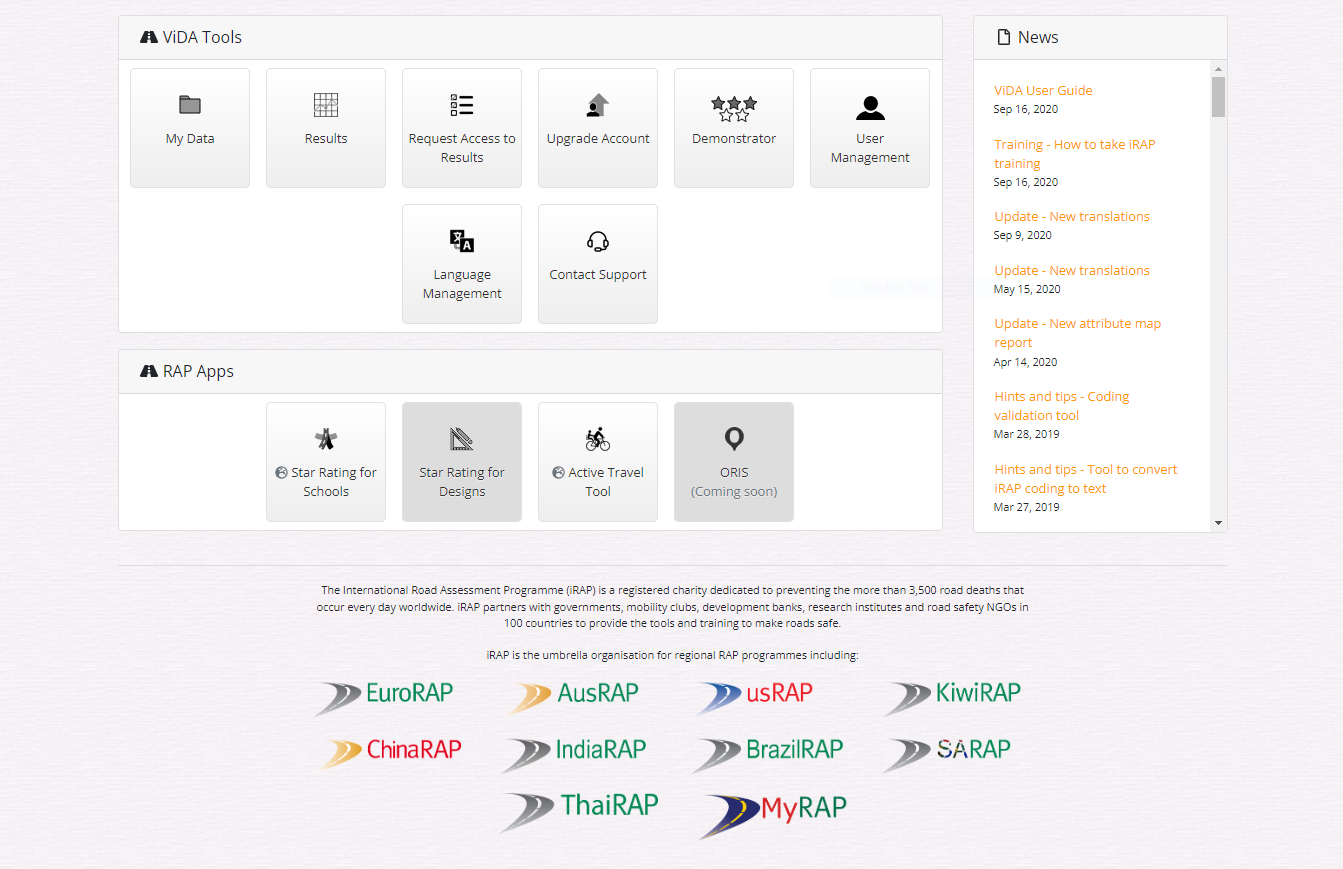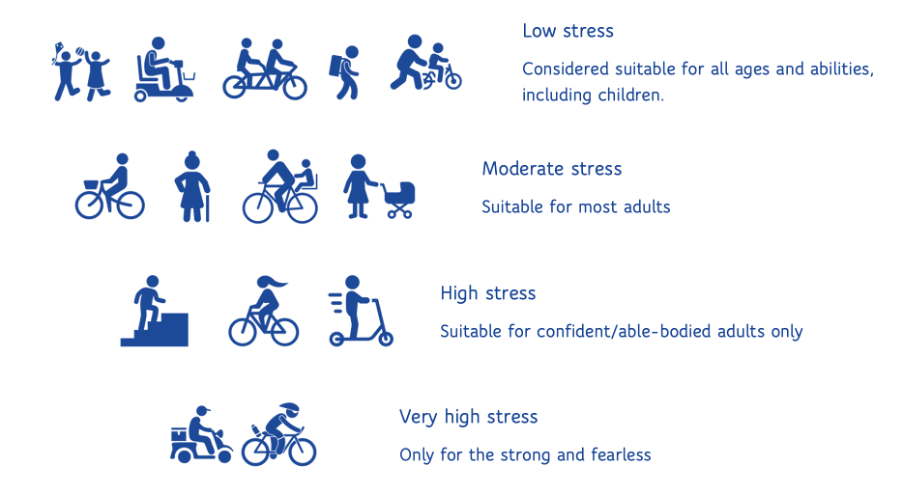
The Road Safety Foundation’s Active Travel Tool aims to help UK road authorities evaluate active travel facilities for both safety according to Safe System principles and age and ability. The tool allows a spot evaluation of the different available facilities for a given road, rather than a network or route-based evaluation that can be achieved using the full iRAP methodology or CycleRAP.
The tool uses safety Star Ratings, together with a age and ability criteria, to compare bicycle and pedestrian facilities, such as paths, crossings and low traffic neighbourhoods (LTN). It is envisaged that the tool will be used to support practitioners in their decision making and help communication of safety and LTS considerations to road safety stakeholders and the public.
Access the Active Travel Tool via ViDA.
Star Ratings
The Active Travel Tool allows practitioners to see how different facilities for cycling and walking would change the safety Star Ratings for pedestrians and bicyclists under different conditions of speed and flow. Star Ratings are a measure of the level of safety which is ‘built-in’ to the road. Five-star roads are the safest while one-star roads are the least safe.
The iRAP Star Rating Model was developed by the world’s leading road infrastructure research organisations and is fully documented on the iRAP website.
Age and ability criteria for road safety treatments
Age and ability criteria, based on level of protection from traffic, speed and the number of lanes of the road, evaluates suitability of three categories of treatments for different types of bicyclists and pedestrians:
- Cycleways, footways and shared use paths
- Crossings
- Low Traffic Neighbourhoods
The criteria are used to categorise a facility into a ‘stress’ level, and broadly align with those used by the Level of Traffic Stress (LTS) rating system originally developed by Mekuria, Furth and Nixon (2012).
- Low stress: where a child of ~8 years of age or a person with a disability would feel confident using the facility independently
- Medium stress: where parents accompanying children, elderly persons or adults unfamiliar with the traffic situation would feel confident using the facility
- High stress: where only able-bodied adults who are familiar with the traffic situation would feel confident using the facility, and
- Very high stress: where only those who are very familiar with traffic conditions and not sensitive to high traffic speeds would feel confident using the facility.
This tool is currently being trialled in the UK. RSF would welcome your feedback on this tool and how you are using it. If you are using the tool, or would like access to it, please contact RSF at icanhelp@roadsafetyfoundation.org.

For more information
Please contact:
Dr Suzy Charman
Executive Director
Road Safety Foundation
suzy.charman@roadsafetyfoundation.org



















